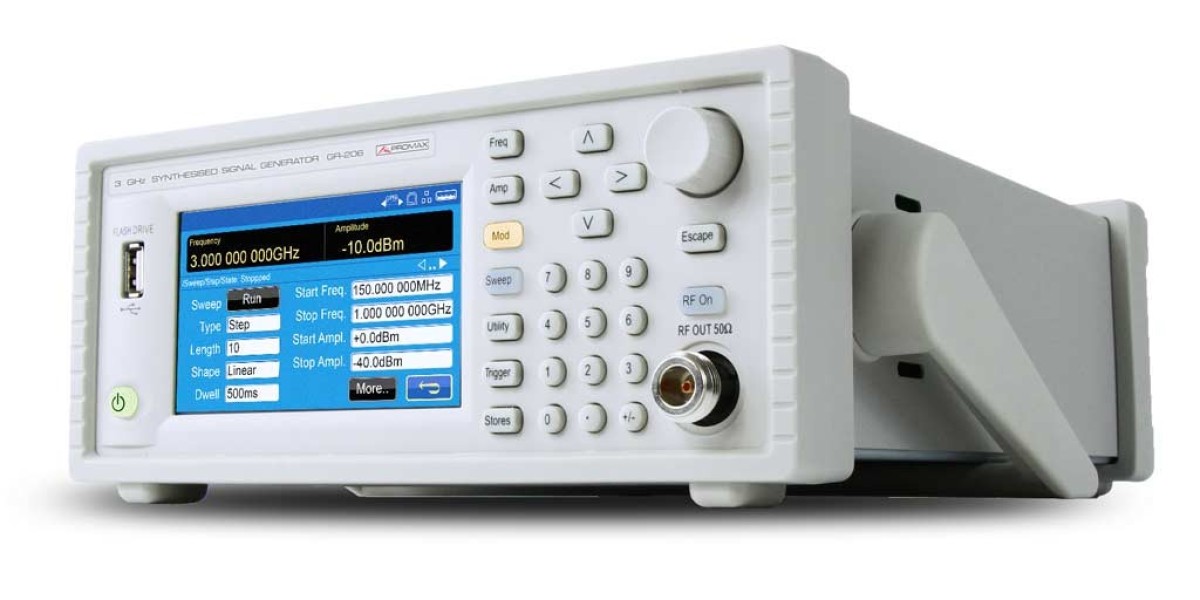Radio frequency refers to any electromagnetic wave frequency lower than around 300 GHz and higher than 30 KHz. Radio waves are produced when electrical charges accelerate and decelerate. This acceleration and deceleration causes the charges torelease energy in the form of photons. The radio frequency is measured in terms of Hertz (Hz) which refers to the number of cycles completed in one second by the radio waves. Common radio frequencies used in telecommunications range from 30 KHz to 300 MHz.
How Radio Frequency Generators Produce RF Signals
A Radio Frequency Generator , commonly known as RF generator, produces radio frequency signals within a specific frequency range. The key components of an RF generator include an oscillator circuit, power amplifier and frequency range selection. The oscillator circuit contains an electronic component like a transistor that oscillates or switches back and forth rapidly when a direct current is applied. This switching action at high frequencies results in the generation of alternating radio frequency signals.
The frequency of oscillation depends on the electronic component used and external factors like resistors and capacitors in the oscillator circuit. The frequency range of an RF generator can be selected with the help of variable resistors, switches or a digital interface. The generated RF signal is weak and needs to be amplified. Power amplifiers are used to boost the power level of the signal. RF generators are capable of producing both continuous wave and pulse modulated RF signals depending on the design of the oscillator circuit and switching circuitry.
Applications of RF Generators
Radio frequency generators have a wide range of applications in various industries and research areas:
- Telecommunications: RF generators are used to test transmitters, receivers and components used in wireless telecom networks. They help simulate actual RF conditions.
- Radar systems: Radars use pulsed RF signals to detect objects. Generators are crucial to test the performance of radars.
- Wireless technologies: RFID, Bluetooth, WiFi and mobile phones need calibrated RF testing. Generators allow performance evaluation and troubleshooting of such wireless devices and networks.
- Industrial heating: RF generators coupled with applicators are employed for industrial process heating like curing, heat sealing, welding and thawing.
- Medical equipment: RF generators deliver controlled RF energy for electrosurgery, cancer treatment, physiotherapy and more. Strict safety protocols are followed.
- Scientific research: Fields like chemistry, biology and material science utilize RF generators for experiments like plasma generation and surface treatment applications.
- RF plasma generation: RF generators coupled with plasma tubes are exploited to generate plasma for thin film deposition, etching and surface modification processes.
- RF component testing: Components like antennas, filters, amplifiers need characterization under real RF conditions using laboratory grade RF sources.
Types of Radio Frequency Generators
RF generators are classified according to output waveform, frequency range and application area:
Continuous Wave (CW) RF Generators:
As the name suggests, these generators deliver unmodulated continuous sinusoidal RF output. They have narrow frequency ranges like 1-200 MHz and provide stable output power up to few watts. Used for component testing, plasma generation etc.
Pulse Modulated RF Generators:
Capable of producing pulsed RF output with controllable pulse characteristics like width, repetition rate etc. Frequency ranges from DC to 18 GHz with peak power levels up to few kilowatts. Employed in radars, material processing and medical devices.
Swept Frequency RF Generators:
Incorporates a mechanism to smoothly vary the output frequency like voltage controlled oscillator over a wide band. Frequency sweep rates can be programmed. Used for systems testing over broadband frequencies.
Signal Generators:
Apart from RF output, incorporate modulation capabilities to produce AM, FM, pulse etc. modulated signals. Advanced models have built-in pulse and sweep functions. Frequency ranges from 100 kHz to 50 GHz with selectable power levels. Ideal for simulating real communication signals.
High Power RF Generators:
Deliver higher continuous or pulsed RF power output from few kilowatts to megawatts. Large body, water-cooling and forced air systems are necessary due to high power levels. Used mainly in industrial heating processes.
In summary, radio frequency generators are versatile laboratory instruments that generate calibrated RF signals essential for testing, research and industrial applications across diverse domains exploiting radio frequency based technologies. Modern generators offer advanced features like broad frequency ranges, multiple output configurations and digital interfaces for measurement and control.
Get more insights on This Topic- Radio Frequency Generators



